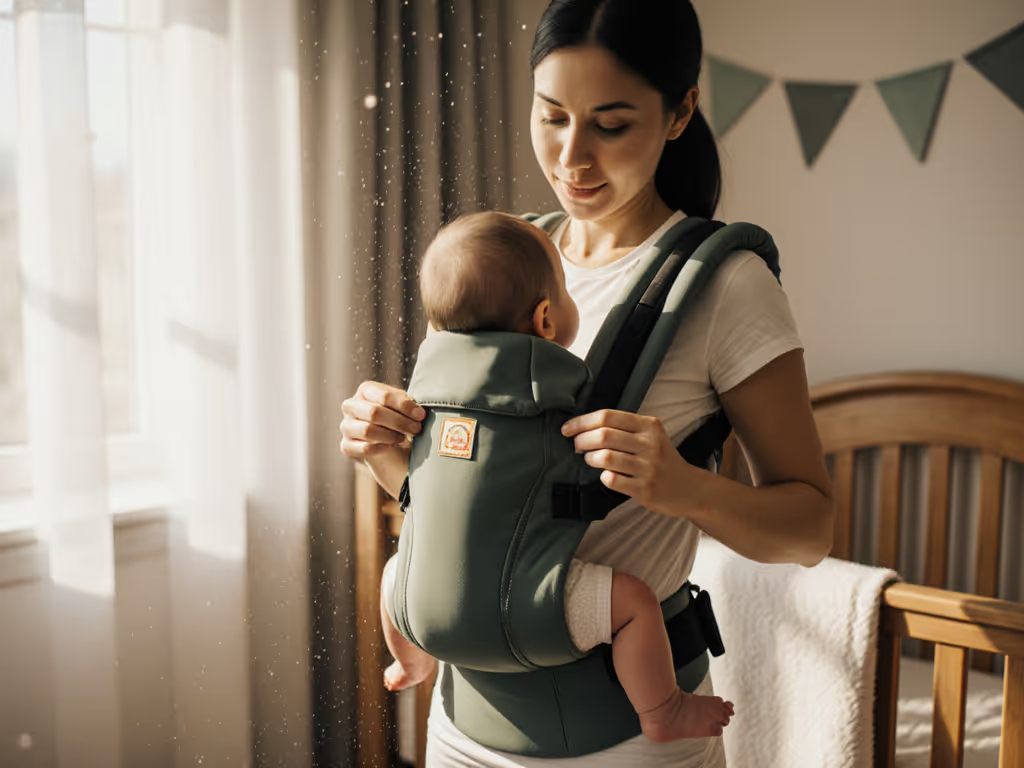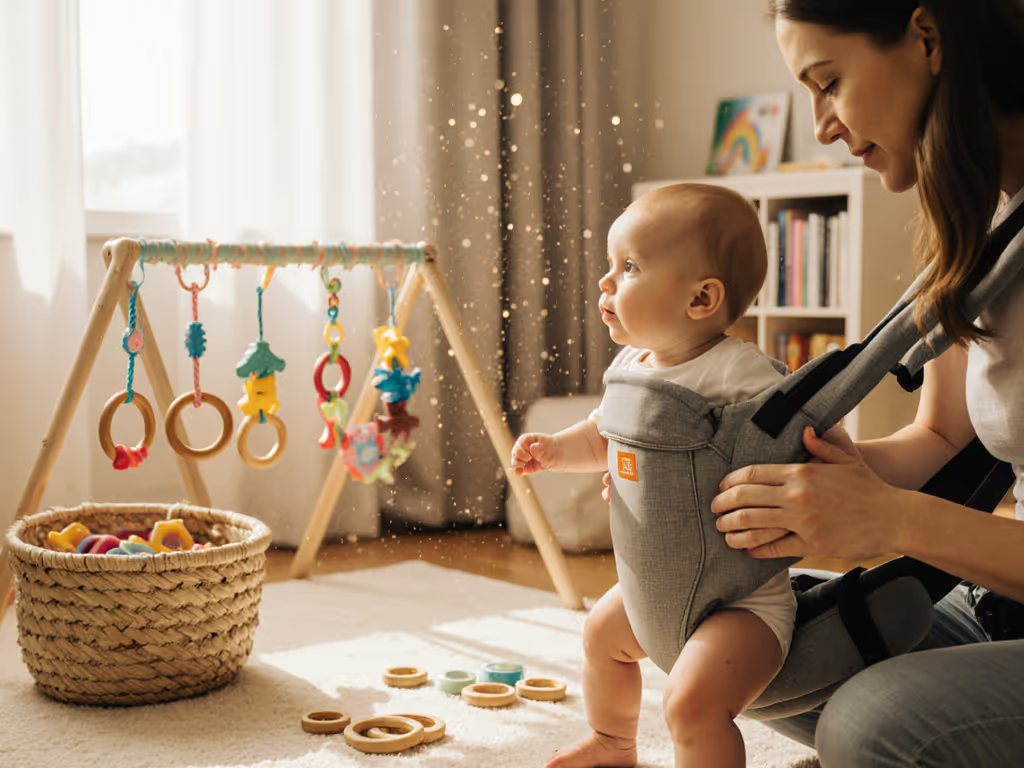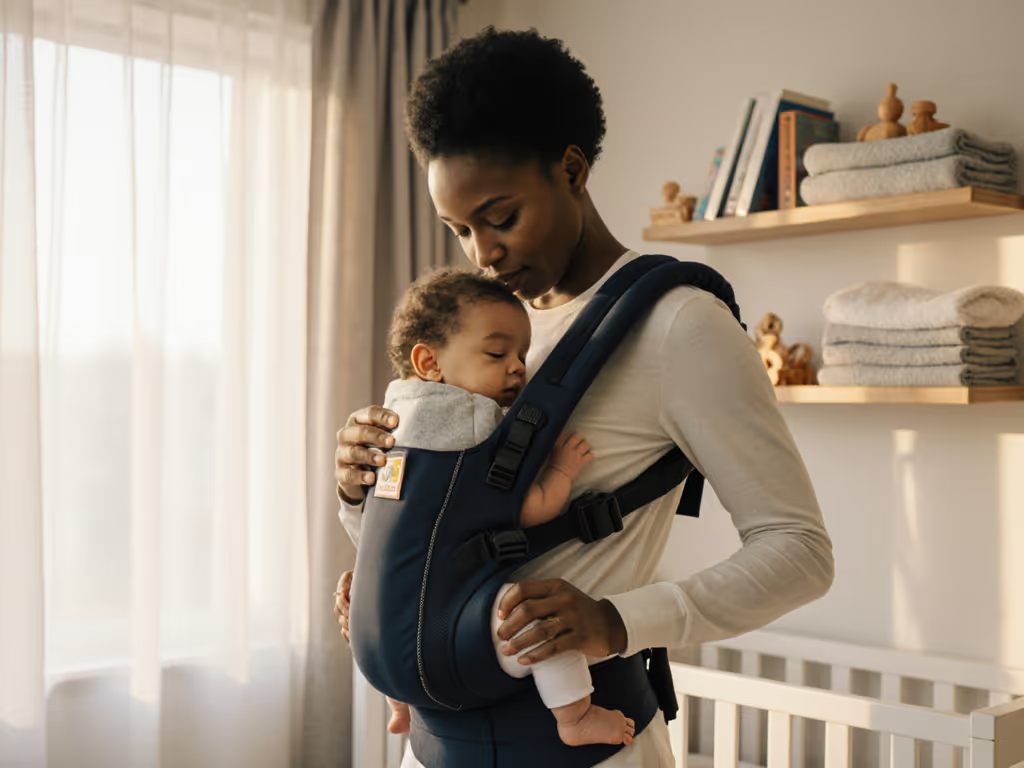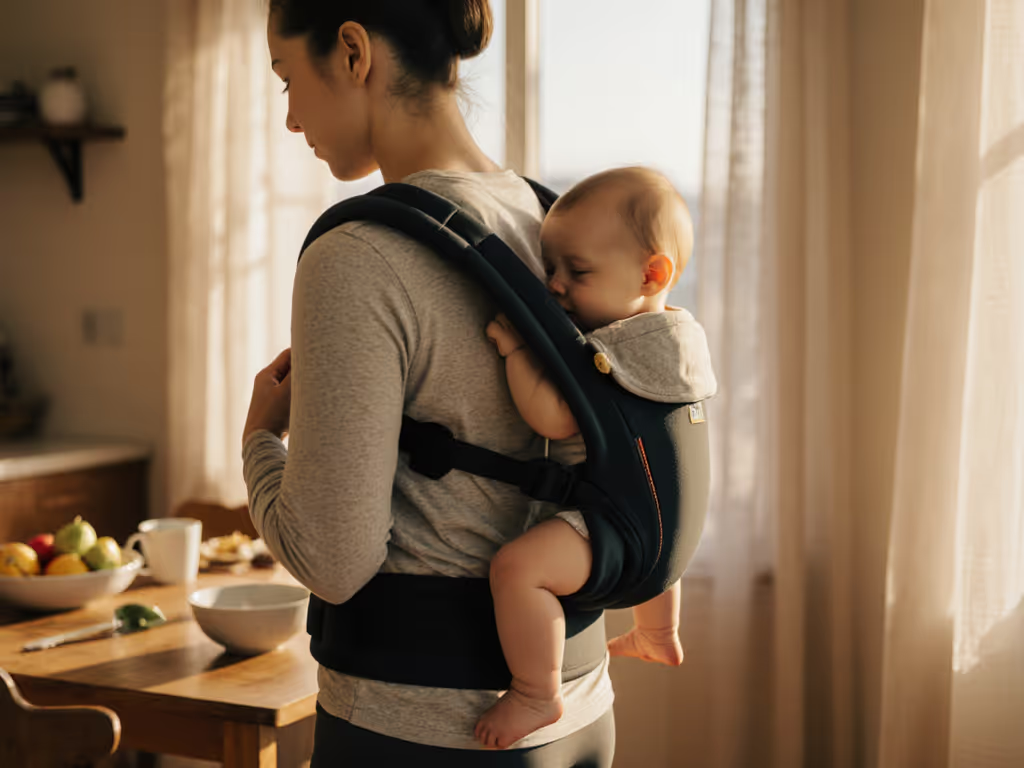When you hold your baby close in a carrier, babywearing benefits extend far beyond convenience, actively shaping developmental pathways. The developmental benefits of baby carriers are increasingly illuminated by research showing how ergonomic carrying supports neural growth, emotional regulation, and physical alignment. For caregivers navigating postpartum exhaustion or mobility limitations, understanding these mechanisms transforms babywearing from a practical tool into a science-backed practice that nurtures both you and your little one. Comfort isn't just about relief (it's the foundation for development itself).
The Hidden Struggle: Why Babywearing Feels Overwhelming
Most caregivers enter this journey armed with love but unprepared for the avalanche of conflicting advice. You've likely encountered dizzying claims: "This carrier prevents hip dysplasia!" "That wrap boosts IQ!" "Only structured carriers are safe!" Yet behind these assertions lies a critical gap: evidence that prioritizes your biomechanics as the wearer. When carriers dig into your shoulders, ride up your torso, or force compromised posture, the promised benefits dissolve. Your discomfort becomes your baby's stress, a cycle that undermines precisely what babywearing aims to nurture.
Consider these realities:
- Safety anxiety rooted in legitimate fears: Can my preemie breathe safely? Is this "M-position" truly hip-healthy?
- Developmental disconnection: When you're focused on not dropping your baby due to shoulder strain, you miss the subtle cues that build secure attachment.
- Physiological strain: A poorly fitted carrier disrupts your autonomic nervous system, elevating cortisol when you need calm to co-regulate your infant.
This isn't theoretical. Three weeks postpartum, I hauled groceries while my baby protested inside a soft wrap that bunched under my arms. My back screamed, but I assumed pain was inevitable. Only later did I realize: the carrier wasn't broken (the fit was).
What the Science Really Says About Babywearing Benefits
Emerging research moves beyond "babywearing is good" to reveal how it shapes development (when ergonomics and fit align). Crucially, these benefits cascade only when the caregiver's comfort is prioritized. Let's dissect the evidence without hype.
1. The Bond That Builds Brains (Beyond Oxytocin)
We know skin-to-skin contact releases oxytocin, but babywearing's structured proximity does more. A 2024 study measuring heart rate variability (Infant and Parent Heart Rates during a Babywearing Procedure) found autonomic coregulation strengthens during babywearing. When your carrier allows upright, aligned posture (ribcage stacked over pelvis), your natural breathing rhythm syncs with your baby's. This isn't just comforting (it trains their immature nervous system to self-regulate). Key insight: This effect diminishes if your posture collapses from shoulder strain or waistband pressure.
Comfort is a posture achieved, not a promise on packaging.
2. Hip Development: It's About Your Movement, Not Just Baby's Position
While hip-healthy "M-position" (knees above bottom) is widely cited, research (Babywearing Practices and Effects on Parental Health) reveals a deeper truth: Your gait directly impacts baby's hip development. When your own stride remains natural (no waddling from tight waistbands or leaning forward from shoulder pain), your baby experiences gentle, rhythmic motion that stimulates hip joint fluid circulation. Preemies especially benefit: studies show reduced NAS symptoms when caregivers wear supportive carriers that prevent postural fatigue during extended holds.
3. Cognitive Calm: How Vagal Tone Fuels Learning
That "reflux baby" who settles faster in a carrier? It's not magic (it's physiology). Research confirms babywearing boosts parasympathetic vagal activity (a marker of digestive and emotional calm) by mimicking the motion of gentle infant massage. But this only works when:
- The carrier distributes weight evenly (no shoulder digging)
- Your baby's torso rests against your upright core (not crumpled forward)
Strap tension matters: over-tightened cross straps compress your diaphragm, disrupting your breathing rhythm, which your baby's nervous system mirrors. Under-tightened straps shift weight unpredictably, triggering infant startle reflexes.
The Fit-First Solution: Turning Science into Sustainable Practice
True developmental benefits emerge when babywearing supports your body first. Forget "one-size-fits-all" claims. Here's how to leverage the science for your unique physiology (without trial-and-error frustration).
Your 3-Point Fit Checklist for Developmental Benefits
Before assuming a carrier "works," validate these non-negotiables. These mirror clinical assessments used in NICUs for preemie carriers:
- Check for your ribcage alignment:
"Can you take a full breath without lifting shoulders? If not, your baby isn't getting steady oxygen flow for brain development."
- Test weight distribution:
"After 5 minutes, is all pressure on your hips (not shoulders)? Shoulder strain = elevated cortisol = disrupted co-regulation."
"Squat slightly. Does the panel stay under baby's bottom? If fabric rides up, baby's hips aren't in optimal spread-squat position for joint development."
Adapting for Real-World Needs (Without Compromising Science)
-
For caregivers with back pain or diastasis: Prioritize waistbands that sit above the pelvic bone (not compressing the core) and use sternum straps only if they don't pull your shoulders forward. Micro-adjust the waistband angle 10 degrees backward (this shifts baby's weight toward your center of gravity). Then breathe.
-
For broad shoulders or larger chests: Avoid V-shaped chest straps. Instead, route straps straight down from shoulders before buckling at the waist, which creates space for your ribcage to expand. Micro-adjust, then breathe.
-
For preemies or reflux: Use a rolled receiving blanket under your own shoulder blades to create a natural recline. This keeps baby upright without forcing you into a painful hunch. Never pad under baby (it disrupts hip alignment).
Your Actionable Next Step: The 90-Second Posture Reset
Before your next wear, spend 90 seconds ensuring your body can deliver the benefits science confirms. This isn't about "perfect" gear (it's about immediate, evidence-based adjustments):
-
Stand against a wall (heels 2 inches away). Check: Head, shoulders, hips, heels touch wall? If not, your starting posture lacks alignment.
-
Put on carrier empty. Adjust waistband first (snug but not tight). Tilt it slightly backward if you have lower back pain.
-
Load baby. Now check:
- Your chin isn't tucked toward chest (airway safety)
- Your lower ribs aren't flaring (core engagement)
- Baby's knees always sit higher than their bottom (hip safety)
If any point fails, micro-adjust the carrier on your body (don't force your posture). Repeat until you can take 3 deep breaths without strain. This is where developmental benefits begin.
When your carrier fits you, baby's nervous system syncs with your calm, not your struggle. That grocery trip I took years ago? The second carrier didn't just ease my pain; it let me feel my baby settle against my heart. That's the real promise of science: when comfort is achieved, development follows. Start where you are. Micro-adjust, then breathe.





